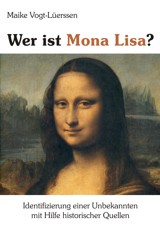Art historians are mere charlatans (excerpt from my new book “Who is Mona Lisa”)

In this article I also speak about the painting of “Salvator Mundi” (Fig. 1), which was sold for $450 million in November 2017 and which was according to the art historians made by Leonardo da Vinci in 1500. Of course, both is wrong. It was not made by Leonardo da Vinci, but a student of his, and it was not made in 1500, but 1512 or later. I already told you again and again, we are able to identify the persons who are lending their faces to God, Jesus Christ, the Virgin and the Saints and Apostles and to the Greek and Roman Gods and Goddesses, because they belong to 90% to the high dynasties in the Renaissance. The person who was lending his face to Jesus Christ in the “Salvator Mundi” is Francesco Maria Sforza (also called “Francesco il Duchetto”), the eldest son of Isabella of Aragon, the Duchess of Milan and Bari, by her first husband, her cousin Gian Galeazzo II. Maria Sforza. Francesco il Duchetto was born in 1492 and died already in 1512, when he fell from his horse and broke his neck. At the age of 7 he was taken hostage by the French King Louis XII and lived in France (at Château du Cloux, close to Amboise) until his death.
Every painter has and had a specific way to depict people and of course his specific ability to do it. There was only one Leonardo da Vinci. The painter of the “Salvator Mundi” knew Francesco il Duchetto, and he was informed about the death of him. Therefore he had to be a former student of Leonardo da Vinci. Since his abduction to France hardly anybody knew Isabella's eldest son any longer. Except for Leonardo da Vinci who visited him frequently in France. I show you some portraits of Francesco il Duchetto, made by a student of Leonardo da Vinci, most likely by Giovanni Antonio Boltraffio, (Fig. 2) and by Leonardo da Vinci himself (Figs. 3, 4, 5).




Whoever used the face of Francesco il Duchetto in his work “Salvator Mundi” had a very specific way to paint the eyes of his subjects. Perhaps the painter was Leonardo’s former student Cesare da Sesto (1477-1523). Compare one of the paintings which was attributed to him by art historians to the “Salvator Mundi” (Figs. 6 and 7) and finally trust your eyes!!! Never forget none of the art historians of the 19th and 20th centuries and of today spent one second in the workshop of the artists of whom they call themselves specialists. We also hardly have any paintings by these artists of the 15th and 16th centuries which are described in detail. Therefore there are no contemporary sources confirming they were really made by them. Art historians make their decisions of who was the painter only by their feelings like goosebumps on their skins or tears in their eyes or a funny feeling in their stomachs when looking at a painting. In the middle ages we called these people charlatans. We should have the courage to do it again. Read the fairy tale: The emperor's new clothes and wake up!!!




